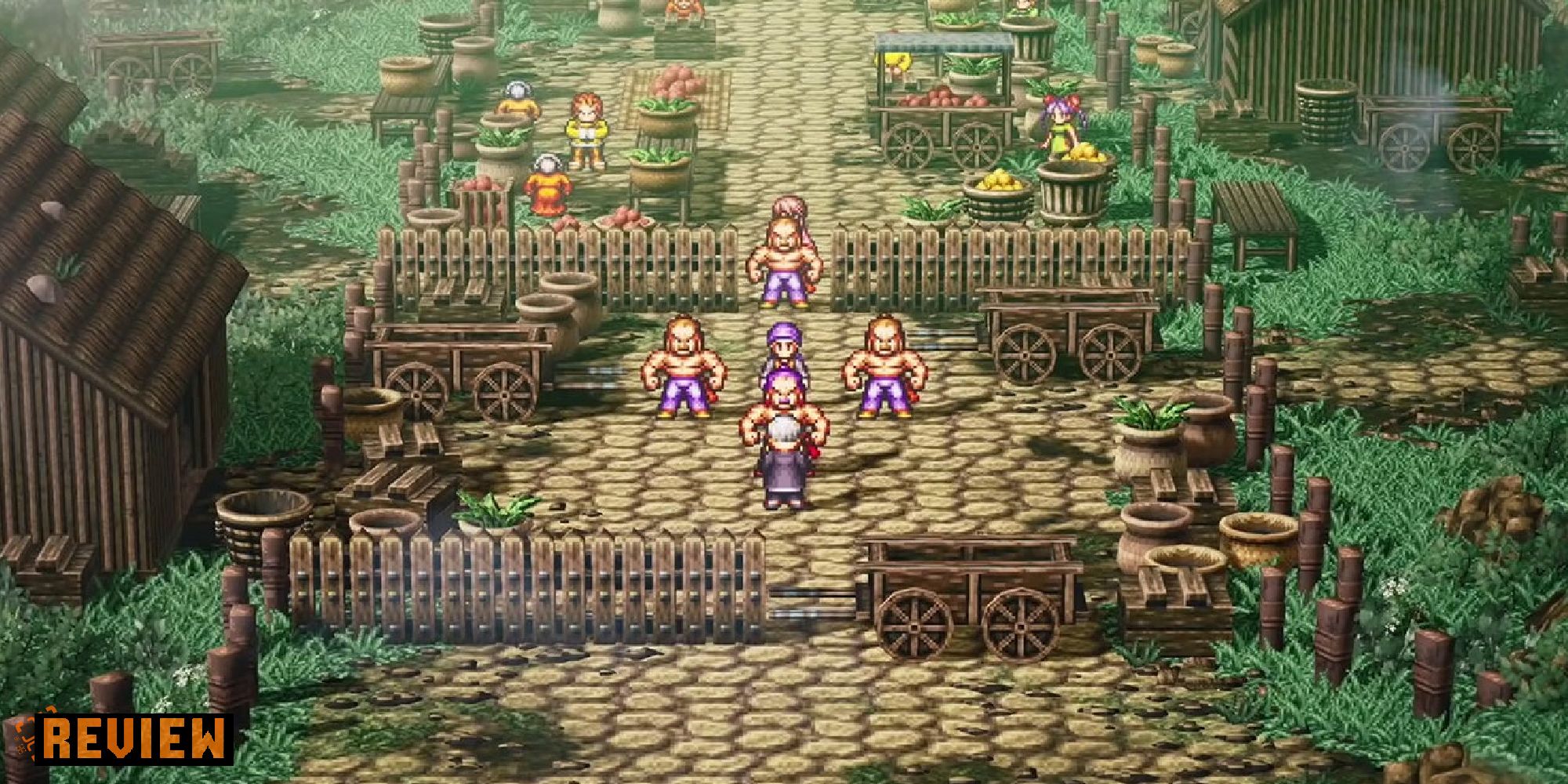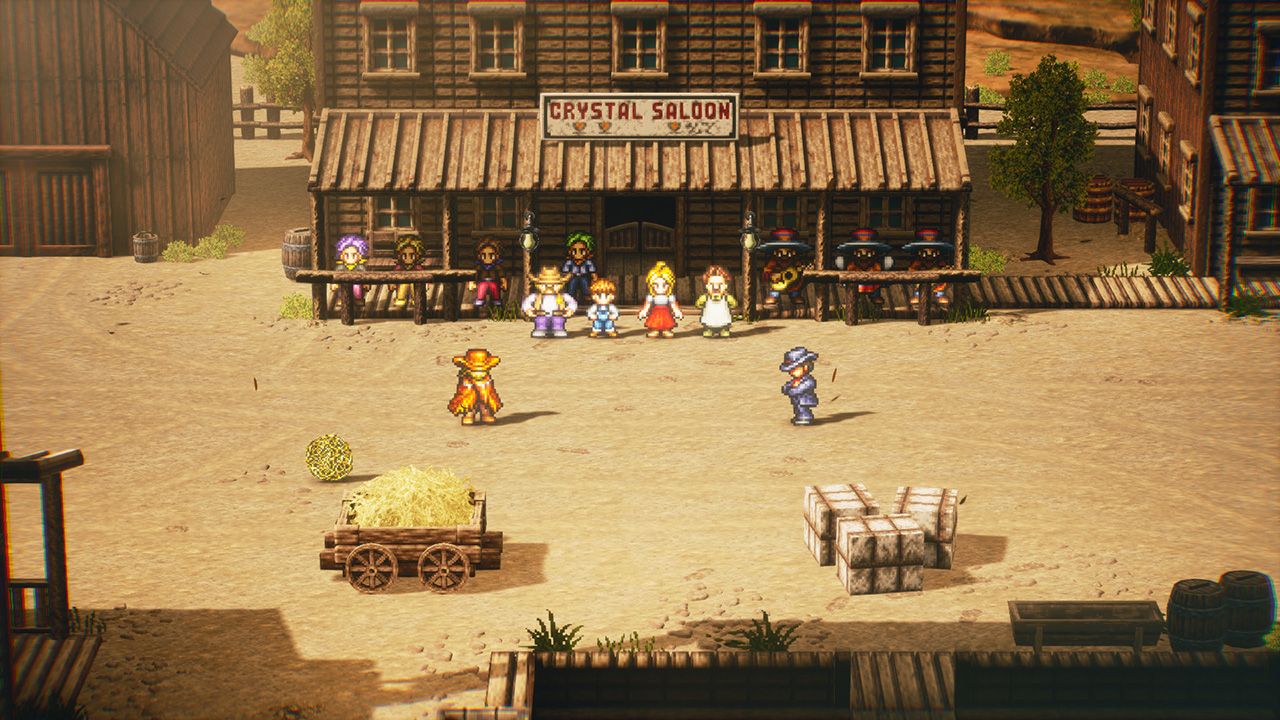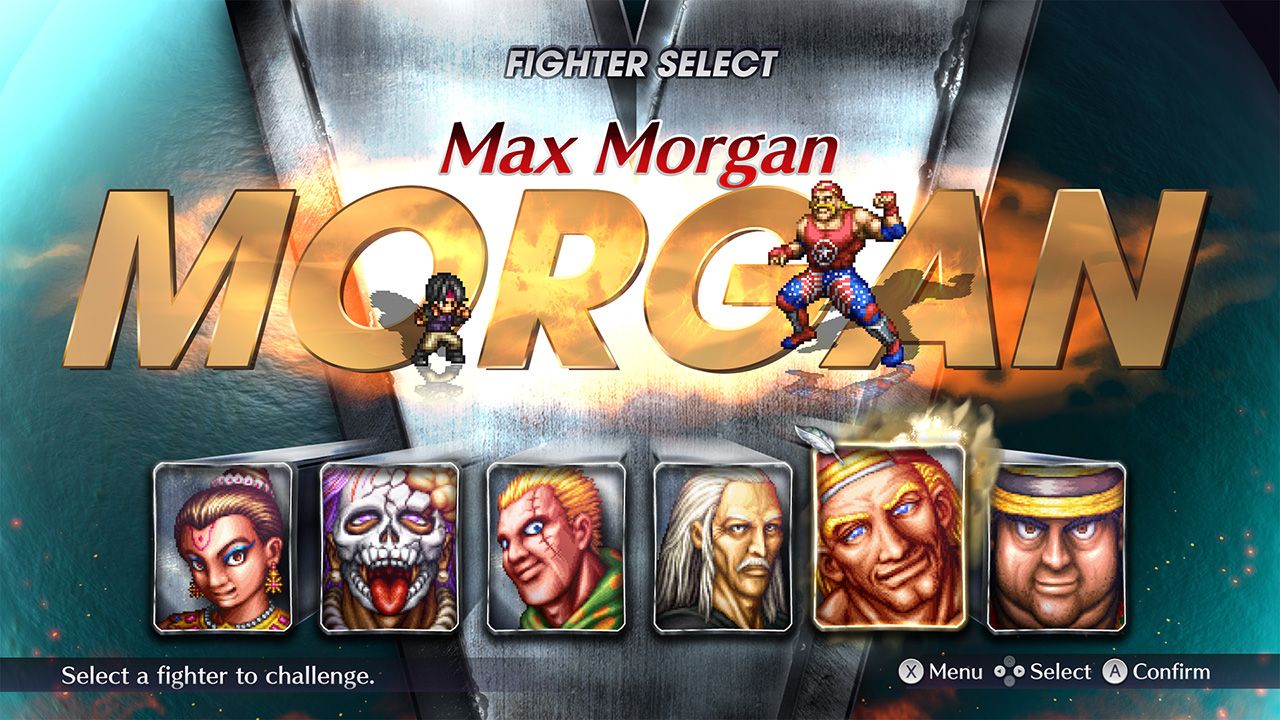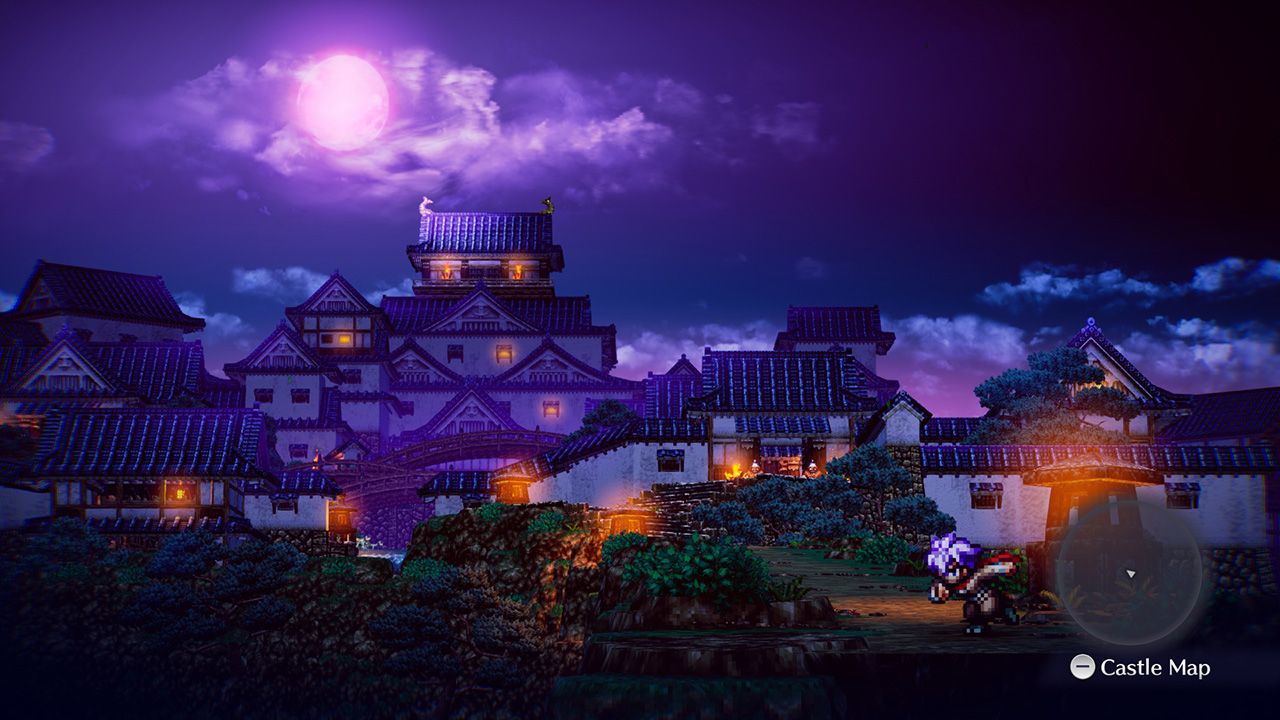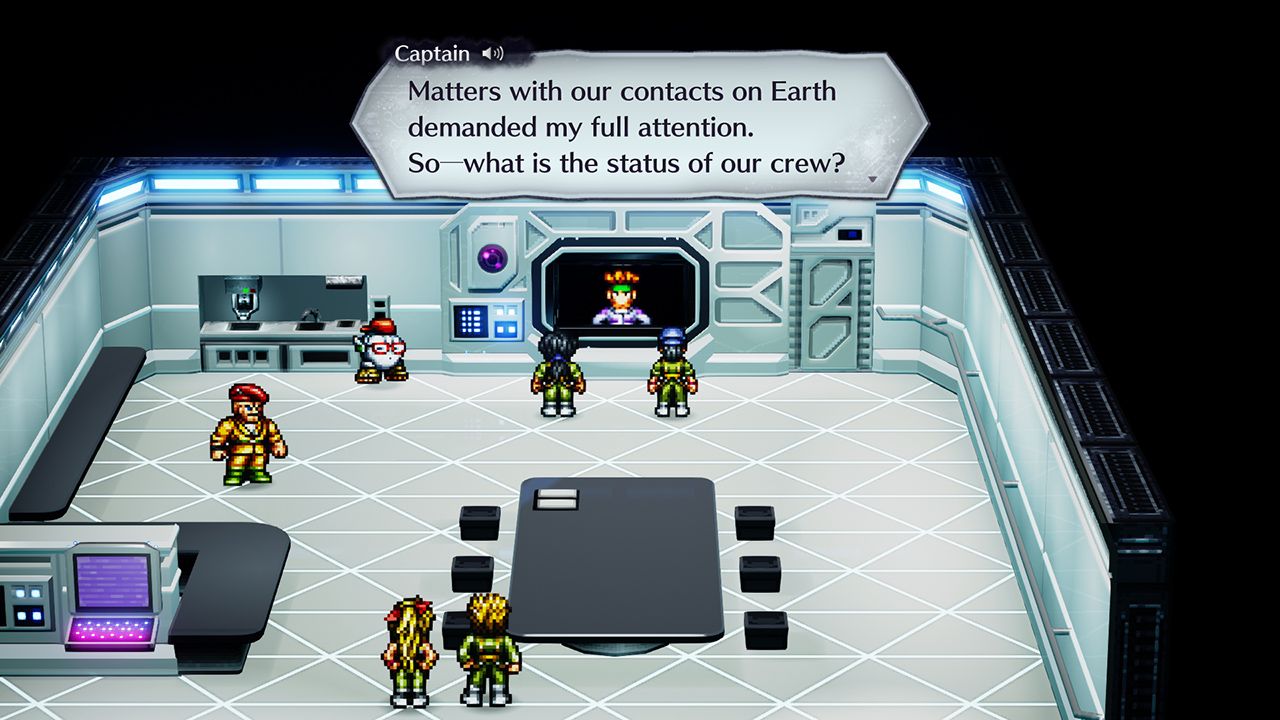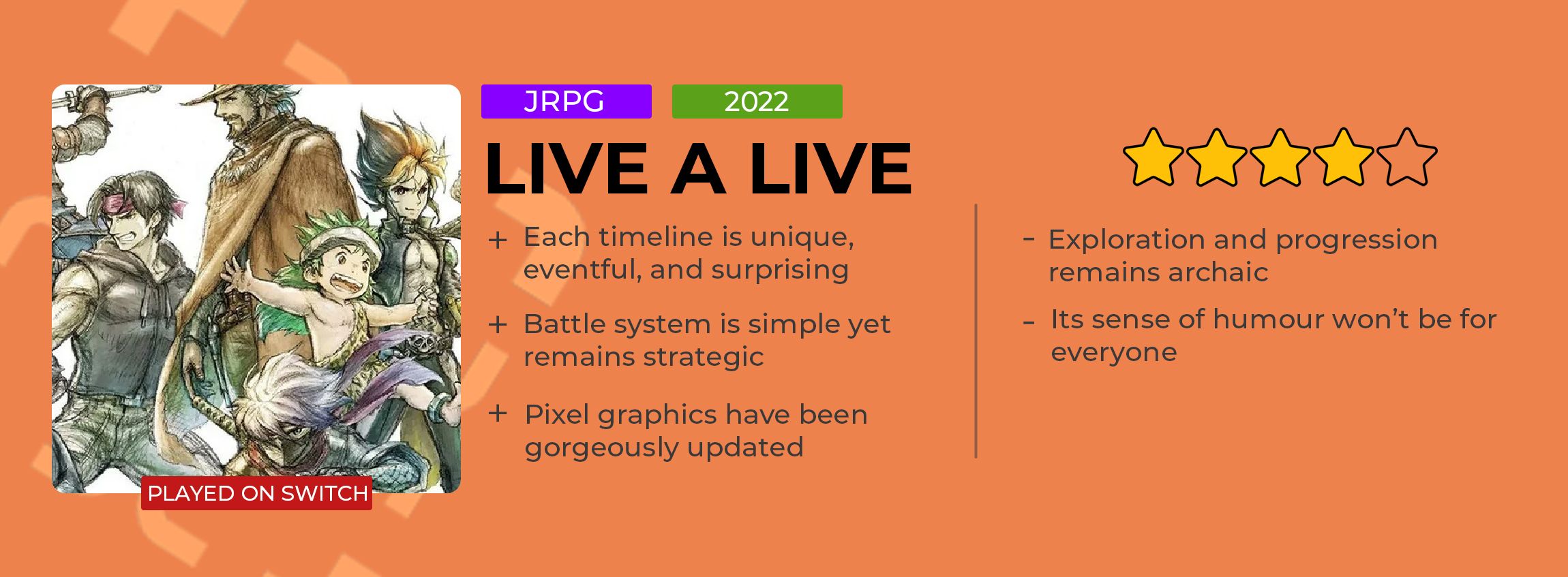Live A Live is simultaneously ahead of its time and rigidly stuck in the past. It abides by so many familiar JRPG conventions while subverting them at every turn, allowing us to indulge in the narratives of each individual character in so many distinct ways. Each one controls, attacks, and speaks differently, with unique mechanics available in each timeline to ensure the otherwise familiar experience never once grows derivative. What a weird game this is.
Its archaic outlook on story progression and navigation frustrates, which haven't really been updated much despite the gorgeous pixel presentation. You’ll backtrack loads, spam through repetitive dialogue, and wander aimlessly in search of your next objective much of the time, but Live A Live’s more triumphant moments are so unexpectedly delightful that these niggles are easy to forgive. After almost three decades locked away in Japan, this forgotten classic has finally found a way to greet the rest of the world, and I’m so glad it’s been given the chance to shine. No longer are we confined by fan translations, this is the real deal.
Live A Live’s premise is a doozy to explain. It’s a game that has you choosing between eight distinct characters from across history that each tell their own individual story, however these will eventually intercept in fascinating ways while still standing proudly on their own.
Here’s a list of the full cast, ranging from handsome cowboys to chaotic cave children to professional wrestlers. I christened them all John Cena, because the Doctor of Thuganomics isn’t being confined by the lowly concepts of time or gender:
- Prehistory: The First
- Imperial China: The Successor
- Twilight of Edo Japan: The Infiltrator
- The Wild West: The Wanderer
- Present Day: The Strongest
- The Near Future: The Outsider
- Far Future: Mechanical Heart
- The Middle Ages: The Lord of Dark
Live A Live is a cumbersome game to review because even detailing how each character plays and the ways in which they differentiate from one another feels like a massive spoiler, let alone delving into what happens once the first permutation of each story has been cleared and the real purpose of this adventure begins to make itself known. I won’t be touching on any of the latter stuff beyond the charming localisation and excellent character work, which deserves special mention because the snappy and oftentimes unpredictable writing here is really something. This game is old as hell, but it’s been modernised in a way where jokes and references still land, whether it be entire sections taking inspiration from classic mecha anime or iconic western films being aped in ways that cry out homage.
At the centre sits a combat system that, aside from a few changes depending on the character you’re controlling, remains universal. It’s grid-based much like Disgaea or Fire Emblem, with the player able to perform a certain amount of movements or actions before their turn is over and control gives over to the enemy. Attacks normally deal a lot of damage, so you might be incentivised to deal with a bigger unit at first, so others perish without an authority figure to lead them or status ailments can be used to lower their attack and defence at the most opportune moment. If you die it’s back to your last save, so be careful.
There’s a decent amount of strategy here, alongside the ability to equip new weapons and accessories, but I honestly always viewed combat as an afterthought to the stories I was eager to see unfold. However, each character comes with a unique loadout and abilities, so you’ll often be learning new behaviours while jumping between timelines, unless you’re more dedicated to finishing a single story before starting another. Surprise: I was not.
Live A Live’s real appeal sits far outside of battle, and I did my best to avoid random encounters whenever they happened to rear their head. Sometimes it’s necessary, such as one character who happens to be a professional wrestler fighting his way to the top. You’ll take on legends of the industry clearly riffing on real life superstars, each of whom have stereotypical appearances and ridiculous catchphrases that ooze self-aware cheese.
You’ll have to sneak around an Imperial Palace as a trainee assassin in one timeline, while another has you taking control of a sentient robot as your crew aboard a spaceship is slowly torn to pieces by an alien creature, or a third has you playing as a young cave boy where the spoken language hasn’t even been invented yet. These different scenarios provided so many choices for creative storytelling, and Live A Live leans into these chances at every opportunity. It’s quite something, exhibiting a level of variety that too few JRPGs these days are willing to indulge in. I bet the developers had so much fun creating this thing, which makes its isolation to Japan even more of a crying shame given its innovative approach.
Some timelines can be a smidge linear, and thus don’t provide much room for exploration or speaking to NPCs as I’d like, but the characters are otherwise so charming that I didn’t mind being guided along the occasional railroad to my final destination. A fantastic job has been done to modernise the game’s visuals to mimic that of Octopath Traveller or Triangle Strategy. Bright and oversaturated colours flood the screen, while depth of field is used to beautiful effect to make locations feel large, distinct, and frequently beautiful. The variety on display does wonders, with every timeline hiding so many surprises that most will find impossible to predict. The more I stop to think about everything this game manages to cram inside itself the more impressed I am, because it’s unlike anything I’ve ever played before.
Live A Live feels like it shouldn’t exist, or was destined to remain hidden away with only a few fortunate fans stumbling upon it in the midst of online forums hosting fan translations of forgotten classics. I’m not sure what inspired Nintendo and Square Enix to bring this game back from the dead for a whole generation, but the fact they went through with it is a miracle. Whether you’re a JRPG fan or simply keen to play something completely different, Live A Live manages to surprise and delight in equal measure while refusing to show its full hand until the last possible moment. I’d argue it was almost worth the decades we spent waiting.
A review code was provided by Nintendo for the purposes of this review.
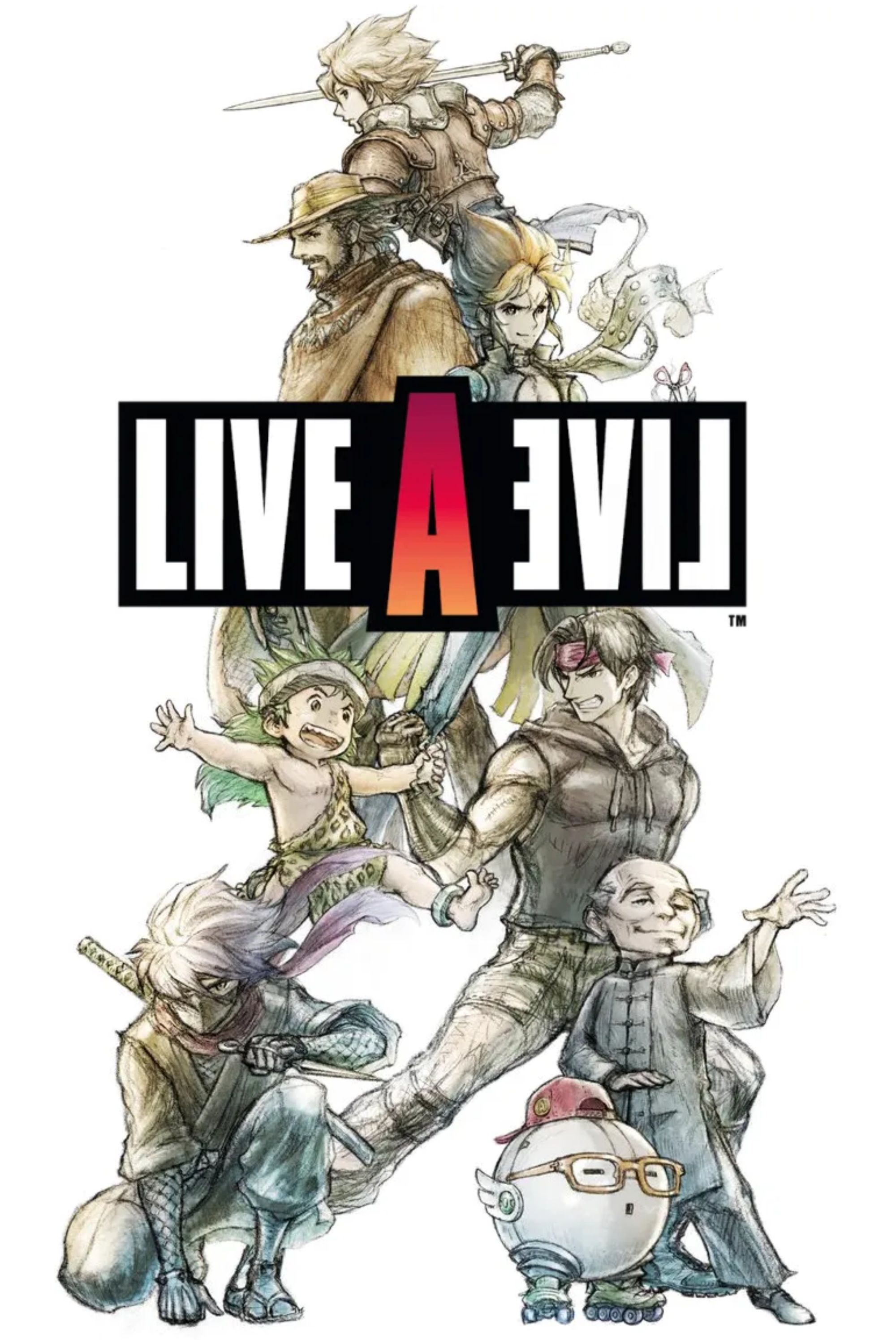
Live A Live (2022)
Live A Live brings together eight protagonists scattered throughout time, originally launched in 1994 and remade for modern systems in 2022. From prehistory to the future, you must unite to take down the powerful Odio.

